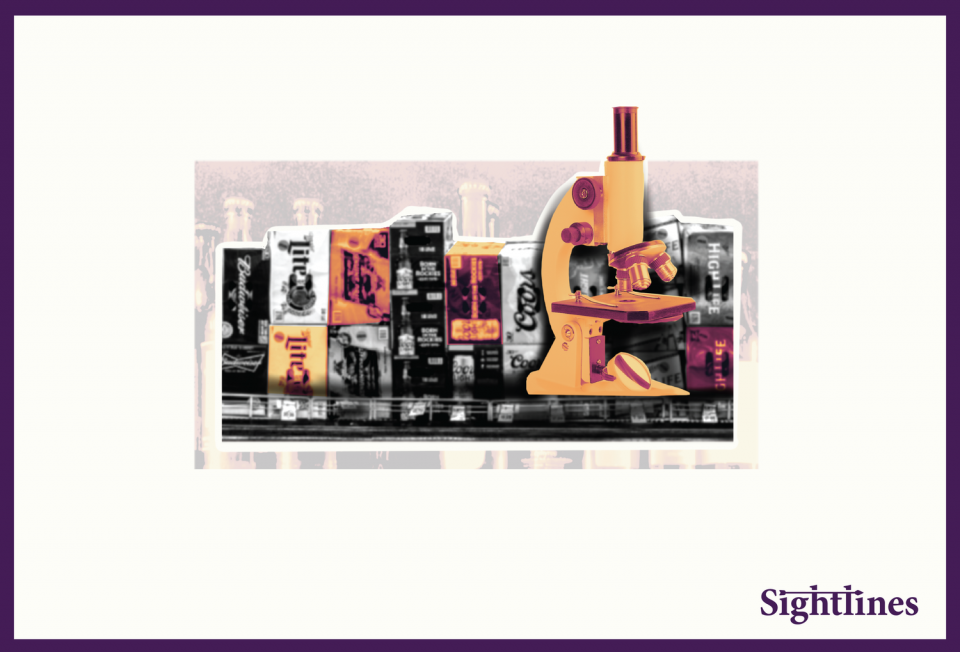Defenders of category management (alcohol’s largest players) have something of a trump card: The practice has been legal since its inception.
The TTB, which regulates and collects taxes on beer, has ruled that category management and shelf schematics are an exception to tied-house laws. The TTB has long ruled that these schematics are essentially guidance akin to a verbal recommendation, and that retailers are free to use or disregard them as they see fit.
Critics like Sorini say that’s not what happens in the real world. The BA argues that shelf schematics are often adopted whole cloth by a retailer, favoring some brands at the expense of others. Sorini says this has become “a centerpiece of retailer merchandising.” The work of laying out a retailer’s shelves for them is obviously a “thing of value,” he adds, when given by a beer company or wholesaler to a store owner. If it found shelf schematics to be “a thing of value,” the TTB could then consider it as an illegal act known as “inducement,” which is defined as when a company provides items or services of value—like suggestions of how to set a store shelf—that encourage a retailer to buy their products and exclude others.
Furthermore, he says, category managers or captains are always from the industry’s largest companies. Anheuser-Busch InBev, for example, has an entire program—called IGNITE—that unifies and promotes its category managers with the goal of “help[ing] consumers navigate the [grocery] aisle.” Companies including Molson Coors Beverage Company, Constellation Brands, Boston Beer Company, and Diageo also employ category managers or captains.
“To the best of my knowledge, no small supplier or wholesaler acts as a category captain for a retail chain,” Sorini says. (Small producers could do this; it’s a matter of whether they have the staff, financial resources, and data assets to do so.) “As a result, limiting or eliminating the current practice of outsourcing shelf stocking and merchandising decisions would put [control] back in the hands of the retailer, which would make decisions independent of the largest suppliers or wholesalers.”
Some programs already exist to try to give new beer brands a leg up at retail. These include Chicago-based Pilot Program’s incubator program; Boston Beer’s Brewing the American Dream program; and Target stores’ Takeoff and Forward Founders programs. Last year, Walmart began carrying Black Is Beautiful, a collaboration beer made to support racial justice, which Walmart sourced from 13 BA-defined craft breweries. The beer appeared in 600 stores, an unusually large national launch for what had until then been a diffuse, charitable brewing project.
Category management isn’t all to the detriment of small producers, either, says Bischel. He says that without category management, retailers would rely exclusively on scan data about what products sell now, meaning they’d be less likely to roll the dice on new or smaller brands. They’d also likely reevaluate their offerings less frequently; more chain retail stores currently “reset” their selections twice per year, in the spring and fall. Less frequent resets and fewer new products would result in what Bischel calls “homogenized stores.”
“[Resets] being left to the individual chains or stores that don’t have the bandwidth to manage them could lead to new innovations missing their chance at chain distribution,” Bischel says. “Are category managers going to take care of their [company’s] brands? Of course they are. But not having these experts could lead to hundreds of products never getting their shot.”
He urges small producers who are critical of category management to consider what the alternative could look like. Currently, small alcohol brands already have to fight for attention from their distribution or retailers. He believes this would only get worse if category managers weren’t there to vouch for them.
“If you only built shelves based on what currently is selling, based on what is scanning in the marketplace, then the smaller brands … would get killed,” Bischel says. “Be very, very careful what you wish for.”
There’s evidence to suggest the TTB is listening to concerns about category management. But there’s also 30 years of precedent to suggest that the agency doesn’t consider these concerns valid enough to do away with category management altogether.
In a 2016 ruling, the TTB pointed to category management as a potential locus for tied-house violations. While maintaining that the agency does not object to shelf schematics, no matter how complex, its review found that “some industry members do not offer a mere shelving plan alone but also include additional services, sometimes of significant value, that exceed … the [tied-house] exemption.” These might include giving the retailer expensive third-party data, or assuming the role of a decision-maker about competitors’ products.
Yet even after the TTB flagged this issue, the agency has not announced any enforcement action in connection with category-management practices. For six years, the agency appears to have had concerns about these tied-house violations, but hasn’t yet cracked the whip.


